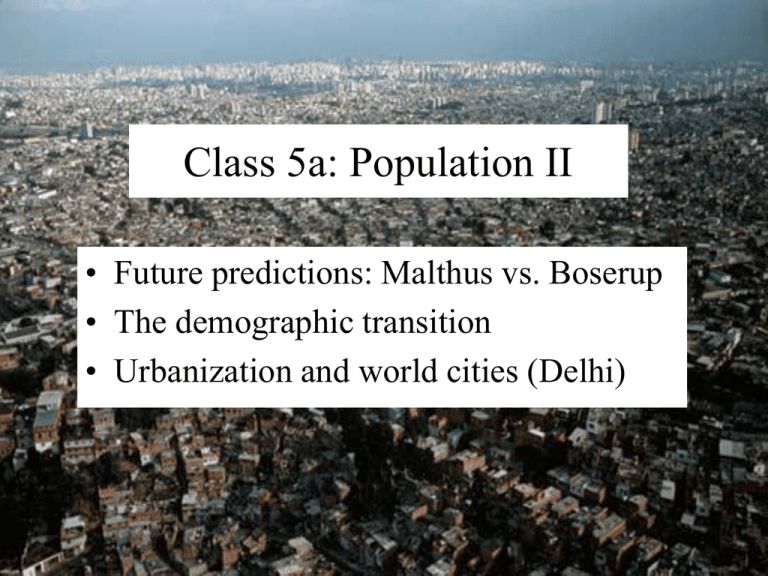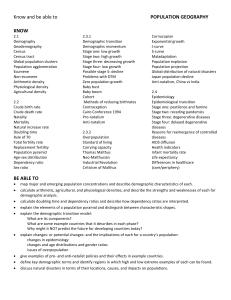class5a.ppt
advertisement

Class 5a: Population II • Future predictions: Malthus vs. Boserup • The demographic transition • Urbanization and world cities (Delhi) Future population • Doubling time = 70 ÷ rate of natural increase Future population • Doubling time = 70 ÷ rate of natural increase Future population: Thomas Malthus • • • • Essay on the Principle of Population (1798) Observing the Industrial Revolution Food is necessary for human existence "The passion between the sexes is necessary and constant" Future population: Malthus • Food production grows arithmetically, but population grows geometrically Future population: Malthus • Food production grows arithmetically, but population grows geometrically Future population: Malthus • Food production grows arithmetically, but population grows geometrically • Therefore, the human population will selfregulate by means of famine • Ecological view of humanity Demographic transition • Shift from high birth and death rates to low birth and death rates Demographic transition • Stage 1: pre-industrial • High birth rate; high, fluctuating death rate Demographic transition • Stage 2: industrial • Birth rate stays high • Death rate drops with better living conditions Demographic transition • Stage 3: urbanized • Birth rate drops; death rate stays low • Growth begins to taper off Future population: Ester Boserup • Conditions of Agricultural Growth (1965) • Technological improvements keep food production ahead of population • "Overpopulation" actually drives agricultural improvement • Social scientists’ view of humanity Future population • Increasing emphasis on quality of life • Reproductive health care • Women’s rights and development Urbanization • Just under half world population • But most growth is in cities • Overcrowding, food security, health Urbanization • Historically follows industrialization • Industrial Revolution: Europe from 12% to 36% • 1850-1910, North America from 16% to 40% Urbanization • • • • 1950-1990, Third World from 17% to 37% Most rapid in history But without economic growth And without urban decentralization Urbanization: megacities • • • • • • Population over 10 million Disproportionately large economic activity From 5 in 1970 to 26 in 2015 Strong income disparities Environmental and health problems Lack of infrastructure





